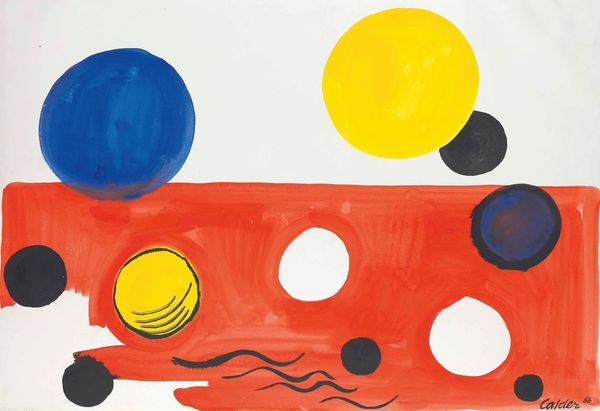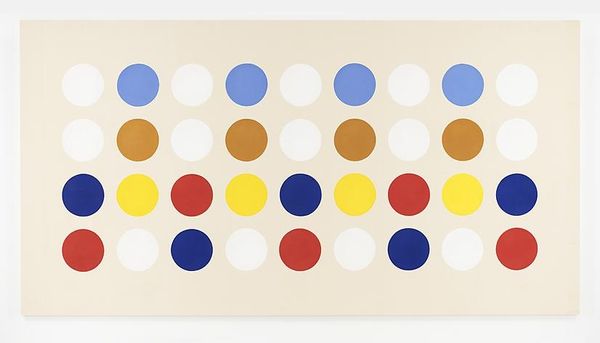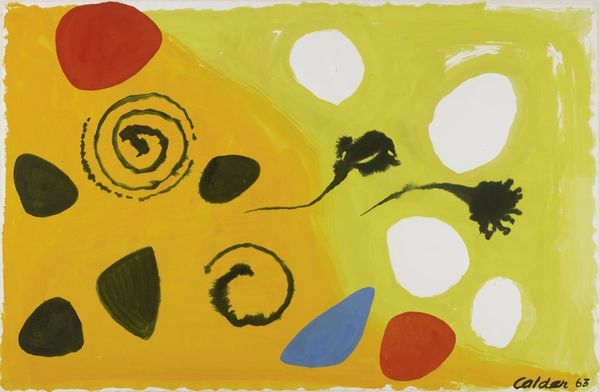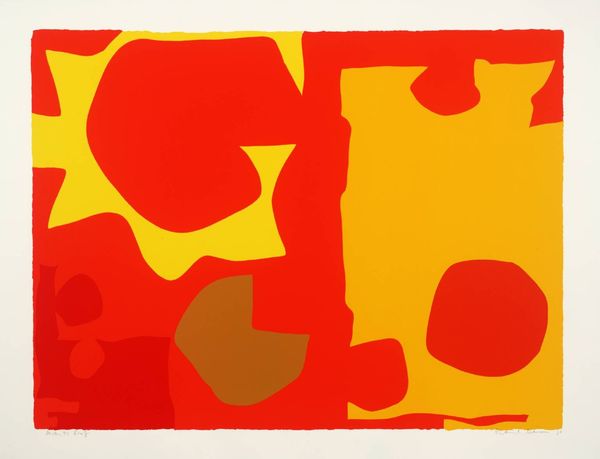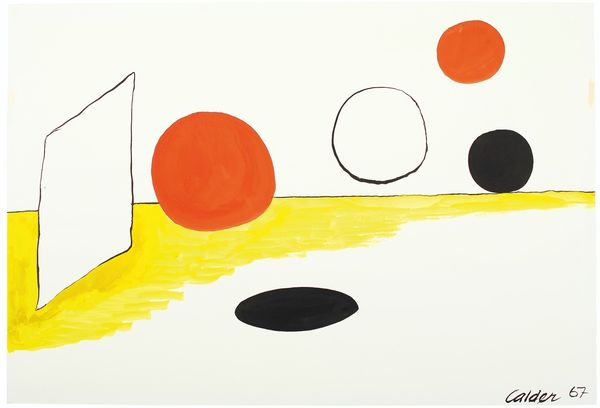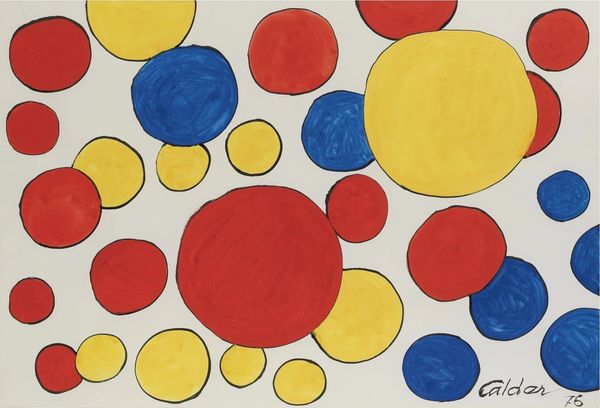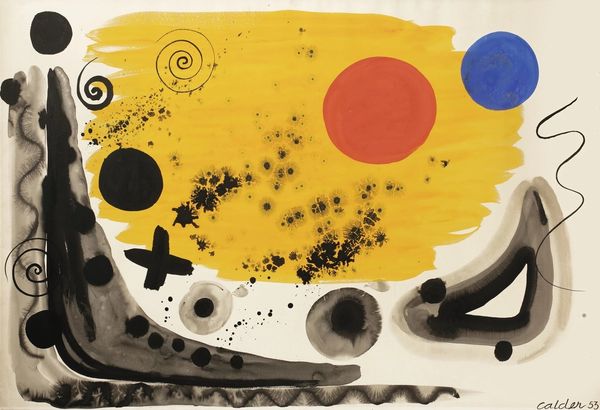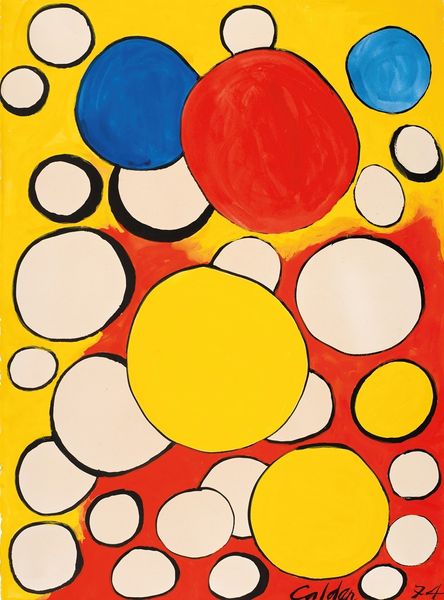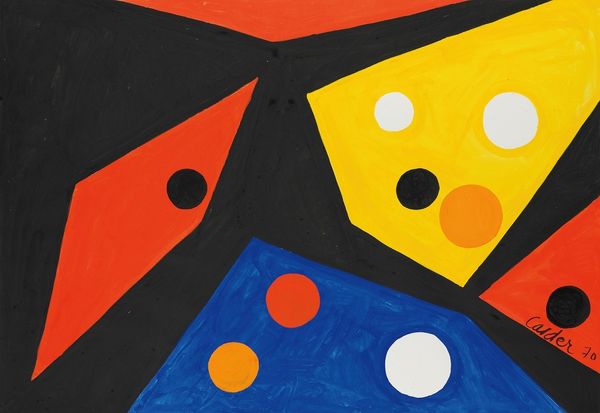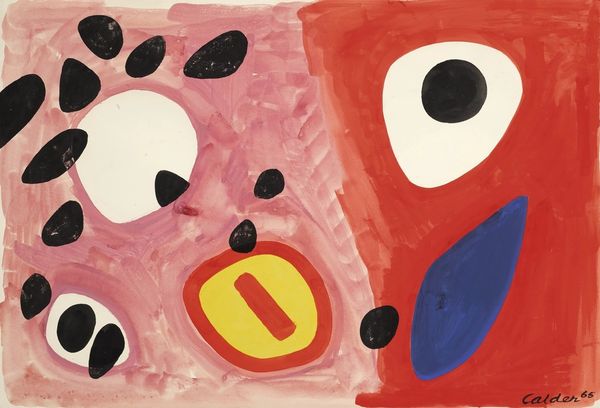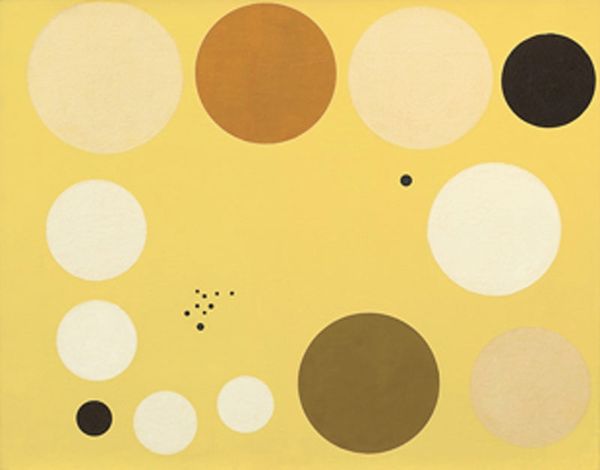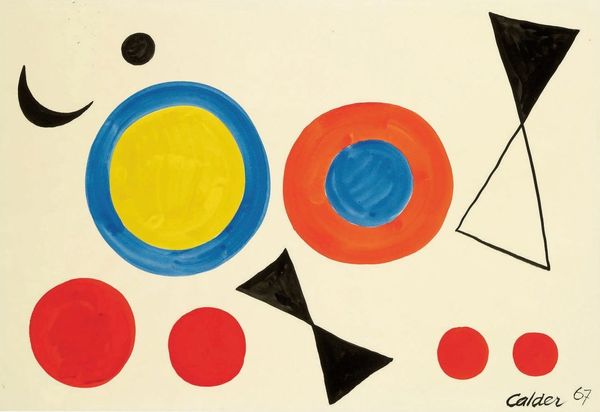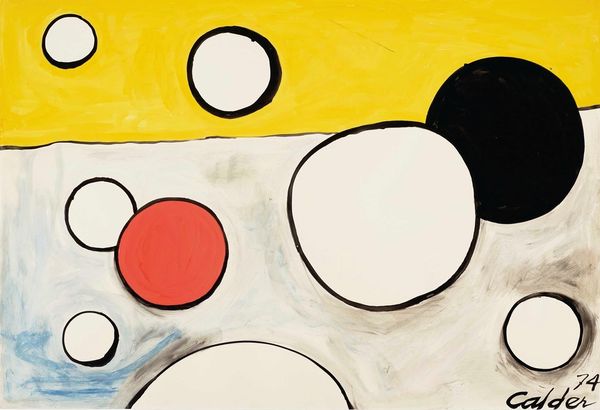
tempera, painting
#
tempera
#
painting
#
pop art
#
abstract
#
form
#
geometric
#
geometric-abstraction
#
line
#
modernism
Copyright: Modern Artists: Artvee
Editor: Here we have Alexander Calder's "Orbs on Orange," a tempera on canvas piece from 1963. The bright orange background and the scattering of circles, some filled with color, others empty, gives it such a playful, almost childlike quality. What do you see in this work? Curator: It’s easy to see the playful aspects, and that connects directly to Calder’s ethos. But consider the historical backdrop. This was '63 - a period of intense social upheaval. For me, the orbs become metaphors for communities or social groups, each occupying its own space, some intersecting, some starkly contrasted through color, evoking segregation, solidarity. Editor: Segregation? That's not something I would have considered, but it's an interesting perspective. Are you reading the different colors as representative of different groups? Curator: Precisely. The dominant orange might represent established power structures, and the other colours -- bold, but confined to circles -- symbolizing marginalized voices. Even the "empty" white circles challenge the very idea of emptiness - who defines them as empty and why? Consider the role of negative space and silence. What isn’t being said, and whose voices are not being heard? Editor: I never thought of it that way, more as a formal exercise in shapes and colors. Your interpretation definitely gives it a different, deeper meaning, layering historical context onto a seemingly simple composition. Curator: Exactly. And it urges us to consider, in today’s sociopolitical landscape, which 'orbs' dominate, which are silenced, and how can we create more intersection, a richer visual dialogue? What responsibility do artists and cultural institutions hold? Editor: Wow, it gives me a lot to think about how we should examine art through different prisms to explore beyond face value. I now see how crucial understanding the context behind art can affect how we interpret the art itself! Curator: Precisely! We learn and grow when we connect theory with practice. That way art never remains just decoration; instead, art can make active contributions to our shared existence.
Comments
No comments
Be the first to comment and join the conversation on the ultimate creative platform.
